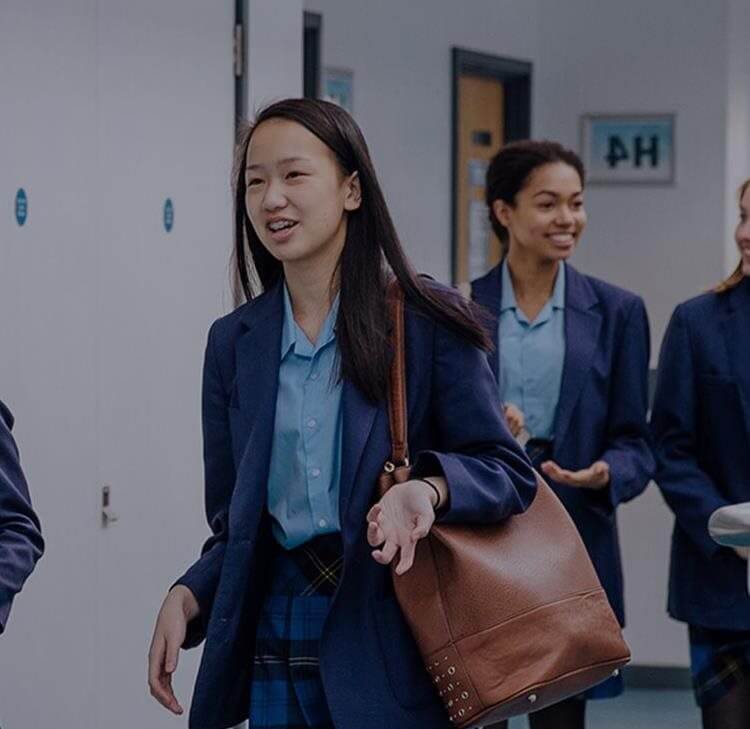What opportunities do the REF 2021 results offer universities?
The long-awaited publication of the Research Excellence Framework (REF) 2021 provides universities with opportunities to generate additional income and build upon the quality of their research output.
The long-awaited publication of the Research Excellence Framework (REF) 2021 provides universities with opportunities to generate additional income and build upon the quality of their research output. Selina Hinchliffe summarises how research has been assessed and represented in the REF 2021 before considering some of the commercial opportunities that these results may offer higher education institutions.
About the Research Excellence Framework (REF) 2021
The REF 2021 results indicate the quality of research work being carried out at UK universities. Greater quality is attributed to research that is world-leading, and lesser quality is attributed to research that is only nationally recognised. The objective of this exercise is to ensure that public spending on university research (circa £2 billion per annum) is worthwhile.
Research submitted by universities has been assessed in three ways:
- 60% of the assessment relates to Outputs, being the published research (e.g. research published in journal articles);
- 25% of the assessment relates to Impact, being the “change or benefit to the economy, society, culture, public policy or services, health, the environment or quality of life, beyond academia”;
- 15% of the assessment relates to Research Environment, which includes the “strategy, resources and infrastructure that support research and enable impact”.
Key takeaways
The REF data shows that there has been a 46% increase in the number of staff submitted to REF by universities, as compared to the REF 2014 results. Although this may suggest that universities have invested more heavily in researchers, in reality, this is a skewed increase. In REF 2014 universities could, to some extent, ‘cherry-pick’ the researchers they submitted. For REF 2021, the submission regulations changed, and universities have been required to submit all their researchers who have “significant responsibility for research”.
The weighting for Impact has been increased from 20% to 25% since REF 2014. This highlights the increasing importance placed on the “change or benefit to the economy, society, culture, public policy or services, health, the environment or quality of life, beyond academia”. A key example of the importance of impact is the Oxford University AstraZeneca COVID-19 vaccine, which has massively benefited society and health.
157 UK higher education institutions submitted 185,594 pieces of research, with the outcomes shown below.
|
|
4 stars (world leading) |
3 stars (internationally excellent) |
2 stars (internationally recognised) |
1 star (nationally recognised) |
|
Outputs |
36% |
47% |
15% |
2% |
|
|
4 stars (outstanding) |
3 stars (very considerable) |
2 stars (considerable) |
1 star (recognised but modest) |
|
Impact |
50% |
38% |
11% |
2% |
|
|
4 stars (capable of producing world leading quality and outstanding impact) |
3 stars (capable of producing internationally excellent quality and enabling very considerable impact ) |
Other |
|
Research Environment |
50% |
37% |
13% |
How to commercialise
The high level of world leading and internationally excellent work, with an outstanding or very considerable impact, suggests that universities are producing research that can be very successfully commercialised.
The commercialisation of the intellectual property (“IP”) within this research can be achieved, most commonly, in one of three ways:
- through establishing a spin-out company, whereby a university sets up a spin-out company and licences the IP to it for the university to manufacture and market. The university receives value, often through a shareholding and sometimes through licence fees;
- through licensing the IP to an existing company which then, for instance, manufactures the product created with the IP and gets it to market in return for payments back to the university; or
- through entering into a contract with a third party entity, whereby each party licences its IP into the joint venture as ‘background IP’ and, based on the terms of the contract, the parties ensure the IP gets to market through mutual collaboration and payments (which can run in both directions).
The above models each have pros and cons, for instance:
- the spin-out model can be more onerous than the model of licensing IP to an existing company, because services (HR, payroll, IT, etc.) may have to be organised for the spin-out;
- the model of a contractual joint venture with a third party can be more onerous than the model of licensing IP to an existing company, because the negotiation and drafting of the joint venture contract has to be more extensively undertaken, to ensure that each party’s contributions and returns in and from the joint venture are clearly established;
- where the IP being commercialised has a wide range of applications that require ongoing support or complex chains to take it to market, the spin-out model can be more appropriate than the model of licensing it to an existing company. Conversely, if the IP has a discrete, identifiable application and can operate within a well-understood market, then licensing it to an existing company can be the better choice.
We have produced extensive webinars on the topic of commercialisation, including:
The REF has permitted universities to make joint submissions – i.e. where two or more universities develop research in collaboration and are joint owners/co-owners of the IP. It is important to take the time to expressly deal with the IP considerations of joint ownership at the outset to avoid disputes regarding ownership in the future.
The share that each co-owner holds in the IP can depend on what type of IP right it is (e.g. co-owners of IP protected by a patent tend to have equal shares) and how much of a contribution each party has made (e.g. where IP is protected by a copyright, the courts have on occasion found co-owners to have unequal shares, on the basis that some co-owner contributions were more substantial than others).
The most important co-ownership consideration is that, unless otherwise agreed, no co-owner can assign or licence the IP to a third party without the consent of all the co-owners. Any co-owner that has not consented may be able to take infringement action.
As the three aforementioned commercialisation models all involve the licensing out of IP, this need for co-owner consent limits commercialisation where co-owners have diverging priorities; for instance, where one co-owner envisages the commercial success of the IP, but another co-owner prefers to limit the IP exploitation to internal research and development to retain an ‘edge’ in the R&D market.
Therefore, it is important to expressly set out the rights that each co-owner has in relation to the IP at the outset of any joint endeavour, including (as a bare minimum) whether co-owner consent needed:
- for a co-owner to exploit the IP itself (e.g. for further research or teaching purposes);
- to grant a third party with the ability to exploit the IP;
- to register the IP (where registrable); and
- to pursue a third party that has infringed the IP.
This article is a brief overview and there is much to consider when commercialising IP or embarking on a joint R&D venture. If you would like to know more, please contact Selina Hinchliffe.
Related expertise
You may be interested in...
Online Event
Wellbeing and financial considerations – practical solutions for challenging times
Legal Update
be connected - Spring 2023
Legal Update
Teacher strikes – lessons learnt so far
Opinion
Can toilet facilities amount to sex discrimination?
Legal Update
New support launched to manage school complaints
Legal Update
Cyber security and data breaches
Legal Update
#EdCon2023 virtual event hailed a success
Online Event
Flexible working in schools webinar
Legal Update
What does the new Provider Access Legislation mean for schools?
Legal Update
High Court dismisses Welsh RSE right to withdraw claim
Opinion
Term-time school worker entitled to national minimum wage for unworked basic hours
On-Demand
Industrial action essentials: what you need to know
Legal Update
Education Software Solutions Limited breaks against the CMA’s intervention: A victory for freedom and flexibility in contracting for MIS services
On-Demand
The Subsidy Control Act 2022. Putting the new regime into practice
Legal Update
Safeguarding at scale report published
Legal Update
Trade unions announce plans to re-ballot members
Legal Update
Widespread industrial action now confirmed for schools
Legal Update
Industrial action and minimum service levels within education
Opinion
Consultation on holiday entitlement – part-year and irregular workers
Guide
FAQs - converting to academy status
Guide
FAQs - becoming a sponsored academy
Guide
FAQs - becoming an academy sponsor
Guide
FAQs – single academy joining a MAT
Legal Update
EdCon2023 launch: Thursday 12 January
Legal Update
The importance of understanding the transitional provisions under the Electronic Communications Code
Legal Update
Biodiversity Net Gain: positive for nature and an opportunity for landowners
Legal Update
Discrimination comes of age
Guide
#EdCon2023: Access a range of expert guidance and resources at our FREE virtual conference
Legal Update
be prepared for the 2022-23 academic year
Legal Update
Teacher Pay Survey 2022
Legal Update
be connected newsletter for schools - Winter 2022
Guide
Good governance essential to avoid falling foul of the ESFA
There’s been little evidence of interventions or financial management reviews this year and it appears the Education and Skills Funding Agency (ESFA) has re-focussed on financial delivery. It’s also telling that there were no discernible changes to the reporting of financial irregularities in the Academies Trust Handbook 2022.
Legal Update
Children's commissioner recommendations for SEND reform
The Children’s Commissioner, Rachel De Souza, has recently published a report “Beyond the labels: a SEND system which works for every child, every time”, which she intends to sit alongside the DfE’s SEND Review (2019) and SEND Green Paper (2022) and which she hopes will put children’s voices at the heart of the government’s review of SEND system.
Legal Update
School complaint management - exploring a new way forward
There’s greater opportunity than ever for parents, carers and guardians to voice any concerns they have relating to their child’s education and for their concerns to be heard and to be taken seriously. While most staff in schools and academies are conscious of their legal duties relating to complaints management, many are struggling to cope with such a significant increase in the volume of complaints they must manage.
On-Demand
The UK's green agenda - the outcomes of COP27 and actions since COP26
Guide
Setting up a trading subsidiary – a guide for academy trusts
We’re pleased to collaborate with Lloyds Bank, who recently asked us and audit and risk specialists Crowe UK to offer guidance that academy trusts would find helpful when considering setting up a trading subsidiary.
Legal Update
DfE Trust Capacity Fund
The DfE has published new guidance and opened the application process for window two of the Trust Capacity Fund (TCaF) for 2022/2023, with a fund of £86m in trust capacity funding focused particularly on education investment areas.
Guide
The Independent Inquiry into Child Sexual Abuse - A guide for schools and trusts
The Independent Inquiry into Child Sexual Abuse was established in March 2015. We now have its report. As you would expect with such a broad scope, the report is long and makes a number of far-reaching recommendations. In this article, Dai Durbridge highlights seven of the 20 recommendations, sets out how they could impact on schools and suggests what steps to take now.
Press Release
Law firm picks up record breaking sixth Education Investor Award
Browne Jacobson’s education team has been named as winner of the ‘Legal Advisors to Education Institutions’ category at the Education Investor Awards 2022 for a record sixth time.
Legal Update
Managed moves between schools
Since the new Suspensions and Exclusions Statutory Guidance was published, we have received a lot of questions about the use of managed moves. For the first time, the Statutory Guidance does explain what a managed move is, but in relatively broad terms and does not cover the mechanics of how a managed move should operate.






























